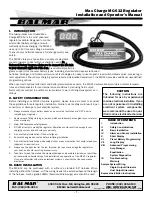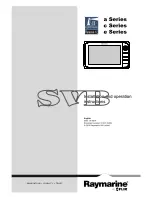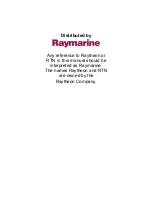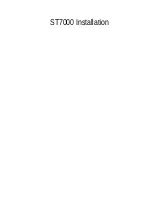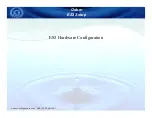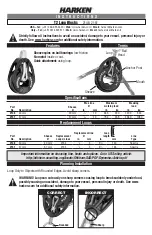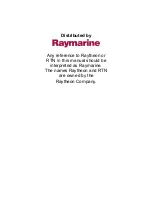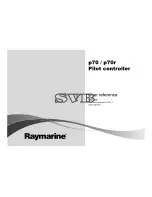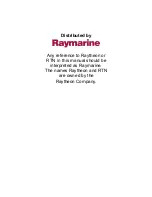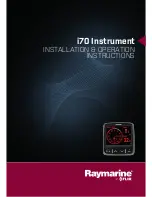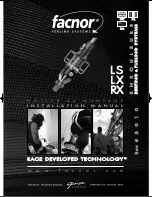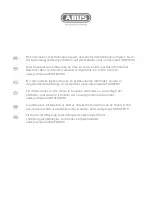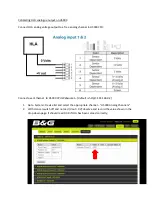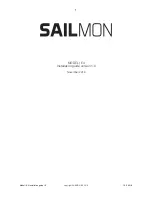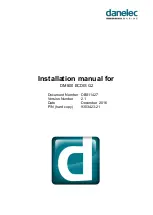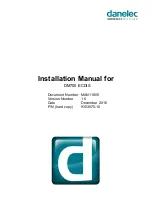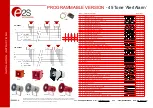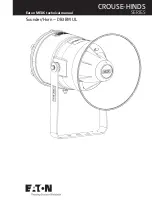
To install the regulator:
1.
Mount the regulator in a dry, well-ventilated location, well
away from hoses and exhaust manifolds which may cause
damage to the regulator or wiring. Avoid areas of heat
and/or high vibration.
2.
The RED wire (in the harness) powers the regulator. Attach
at the positive output terminal at the back of the alternator.
If an isolator is used, this wire must be located on the bat-
tery side of the isolator. On a 12V system, this wire can carry
8 amps and must be protected by a 10-amp fuse. A fuse is
included with the wiring harness.
3.
The POSITIVE battery sense wire, as shown in the illustration
at right, monitors battery voltage. The positive and negative
sense wires MUST be connected for the regulator to work.
The positive sense wire should be connected 1) at the bat-
tery, if only one battery bank is used; 2) at the "common"
terminal of the battery selector switch for multi-bank charg-
ing; or 3) on the isolator terminal for the largest battery bank
(if isolator is used). This wire is user supplied and should be
14 -gauge (minimum). Spade and ring terminals, and a 1-A
mini fuse pigtail are provided. Refer to regulator side label, or Figure 3
below for terminal locations. Caution: Sense wires MUST always see the bat-
tery being charged. Be sure to observe polarity when connecting. When con-
nected, the Positive Battery Sense draws approximately .53mA .
4.
The BROWN (ignition) wire activates the regulator when +12VDC is applied
to the system. Attach the BROWN wire to a sw12VDC source. The
auxiliary side of the ignition switch, or an independent (ungrounded) oil
pressure switch are both acceptable connection points. A toggle switch may
be added to this circuit to shut down the alternator load in cases where
maximum propulsion is needed.
5.
Attach the Ford-type harness plug to the regulator (see illustration). The sec-
ond BLACK (ground) wire in the harness attaches to the Negative Battery
Sense Terminal. Both BLACK wires attach to preferred ground terminal on
the alternator. A (user supplied) ground strap between the alternator and
the preferred ground at the engine is also strongly recommended.
6.
Plug duplex connector with BLUE (field) and White (stator) wires into rear of
alternator.
7.
If you are using an electrical tachometer that is being driven off of your alternator's stator pulse, plug the white stator wire into the ter-
minal provided on the regulator, and the tach feed into the Tach Out terminal. If you are not using the stator pulse to drive your
tachometer, DO NOT plug the stator wire into the regulator's Stator connection, as the attachment of the stator wire to the regulator tells
the regulator that it is necessary to continue to provide a voltage pulse to maintain a tach signal, even if the batteries are fully charged.
When using the alternator and regulator to drive your tachometer, there is a possibility that you will see system voltage creeping up
when your batteries are fully charged. This occurs as a result of the regulator's effort to provide a "blip" of voltage to the alternator to
keep the tachometer feed activated. This voltage creep can usually be reduced or eliminated by increasing the load on the batteries, ie.,
turning on a few cabin lights or cabin fans, until the batteries are allowed to accept charging voltage.
- 2 -
F
Fiig
gu
urre
e 1
1 - Regulator wiring attachment.
F
Fiig
gu
urre
e 2
2 - Wire size chart. Represents 3% voltage drop.
Lengths should be measured in round trip.
F
Fiig
gu
urre
e 3
3 - Regulator terminal layout.
Length 10 Ft.
15 Ft.
20 Ft.
25 Ft.
50 Ft
75 Ft.
100 Ft.
Amps
25
10
8
8
6
4
2
1
50
8
6
4
4
1
2/0
3/0
75
6
4
2
2
2/0
3/0
4/0
100
4
2
2
1
3/0
4/0
125
4
2
1
1/0
3/0
4/0
150
2
1
1/0
2/0
4/0
175
2
1/0
2/0
3/0
200
2
1/0
2/0
3/0
225
1
2/0
3/0
4/0
250
1
2/0
3/0
4/0
275
1/0
2/0
4/0
300
1/0
3/0
4/0
325
1/0
3/0
4/0
350
2/0
3/0
375
2/0
4/0

